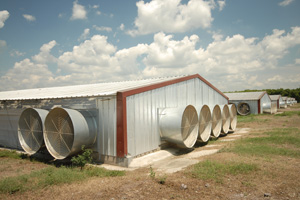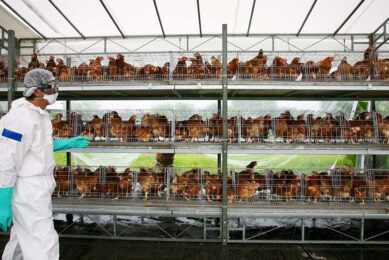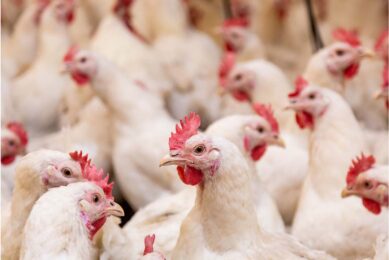Central America on the way to further progress

El Salvador will be hosting the upcoming edition of the biennial ALA congress and show. This small country in Central America represents the growing importance of this region in the global poultry business.
By María de los Ángeles Gutiérrez, Chile
Central America consists of seven independent countries: Guatemala, Belize, Honduras, El Salvador, Nicaragua, Costa Rica and Panama. This continent covers 521,504 square kilometers and has an estimated population of 45 million people (2013). In recent years, the average contribution of the poultry sector to the Gross Domestic Product (GDP) of Central America has been estimated at 2.5% and 12% to the agricultural GDP. The capacity of the poultry business varies, depending on the size of economy and consumption of each country in this region.
Health status
The biggest challenge in recent times for Central America, has been to stay alert on the health status of the region. The reason for that is the poultry business in Mexico, which has been affected by highly pathogenic avian influenza virus (H7N1) since June 2012 until today. Given the fact that Central America is located between the southern border of Mexico and the western border of Colombia, the Poultry Federation of Central America and the Caribbean has asked regional governments and their official health authorities to urgently pay attention to the health status of these countries. Primarily this holds for Guatemala and Belize, the neighbouring countries of Mexico.
Central America has a free trade agreement with the US. This agreement guarantees export from the US to Central America at preferential prices (almost without tax) and vice versa. Since NAFTA came into force, the imports of poultry meat of Central America from the US have gone up from 5% to 20%. However, this region has not exported poultry products to the US yet. In order to let this happen, keeping a free health status is essential.
Guatemala leading
Guatemala ranks first in the Central American poultry industry. According to the latest report of the National Poultry Farmers Association of Guatemala (ANAVI), the industry has had an average annual growth rate of 3% to 4% in consumption and bird population, and this has been stable in the last five years.
In 2012, egg production totalled two thousand 296 million units and 240,500 tonnes of poultry meat. In this same period, each Guatemalan consumed 24 kilograms of poultry meat and 152 table eggs. The layer population in this country in 2012 counted 9.2 million hens. This represents a growth of 5.2% compared to 2011. For the current year, they predict a growth of between 8% and 10%.
With respect to broilers, the population counted 138 million heads, which is about a 1% decline, compared to the previous year. ANAVI indicated that production is closely related with the domestic market. To a limited extent there is some export taking place to El Salvador and Honduras.
Cost effective Nicaragua
According to the National Association of Poultry and Food Producers (ANAPA) of Nicaragua, the poultry industry in this country has been modernised significantly to become more competitive.
During 2012, the broiler and egg industries expanded capacity and introduced new technology. Due to the investments made by producers, Nicaragua can now offer the lowest prices in Central America. The Regional Council of Agricultural Cooperation (CORECA) states that the price of poultry meat (US$ 1.08 per pound) in Nicaragua is 20-60% cheaper, compared to other countries in Central America. The same holds true for the egg business.
The retail price for a box of 30 eggs is currently only US$ 3.45. Poultry meat production reached 89,739 tonnes with consumption of 17 kilos per capita. The government has allowed the import of 3,604 metric tons of broilers, 53.8% as part of the Free Trade Agreement between Dominican Republic, Central America and the United States. The other 47,2% is under authorisation of the Ministry of Development, Industry and Trade (MIFIC).
Egg production reached 492,750 thousand units and a per capita consumption of 82 eggs, which represents the lowest consumption in the region. Therefore Nicaragua seems to have considerable growth potential. For 2013, the Nicaraguan poultry sector expects to grow by 5% in broiler production and up to 22% with eggs.
Growth country Costa Rica
For both meat and eggs the most expensive country is Costa Rica. The poultry industry in this country is primarily oriented to domestic consumption. However, from July this year, Honduran authorities have also permitted imports of hatching eggs, day-old chicks and frozen poultry meat for a three year period from Costa Rica.
Also, according to the Chamber of Poultry Producers in Costa Rica (CANAVI), the National Health Service (SENASA) is establishing a certification process for Costa Rican plants to export poultry products to Mexico.
Currently, poultry production reaches about 118,000 tonnes with a consumption of 25 kg per capita. División Industria Pecuaria de la Corporación Multiinversiones (Dipcmi), has a market share of between 28% and 30%. They compete closely with Cargill, who in 2011 bought Pipasa, putting them in a dominant position with a 50% market share. The remaining 20% is shared between Avícola Ricura (a subsidiary of Wal-Mart) and some other small farms.
According to CANAVI, Costa Rica’s health status allows for exports. For the moment however, domestic production covers internal consumption. Total egg production reaches 928,478 (thousands of units) with a per capita consumption of 195 eggs annually.
Modern technology in Panama
The National Poultry Association of Panama (ANAVIP) issued a report which revealed that 86.9 million birds were slaughtered in 2012. This met with the demand for food and per capita consumption of poultry meat of 38.7 kilogrammes. Moreover, egg production increased 1.59% from 491 million units in 2011 to 498 million in 2012, while per capita consumption was 132 eggs.
In addition, the ANAVIP report also stated an increase of exported processed products. For producers in Panama, these results have been possible thanks to the constant investments in advanced technology on farms and processing plants. This has allowed a greater efficiency and production increase.
Belize self-sufficient
Belize is a small country with a population of only 356,660 citizens. This country has a surplus of meat and eggs, because its demand is totally covered by domestic supply.
According to the annual report of the Belize Poultry Association (BPA) in 2012, production of poultry meat totalled only 17,476 tonnes, with a per capita consumption of 49 kilos. On the other hand, egg consumption fluctuated between 122 and 125 eggs per capita, reaching a national production of about 44.6 million eggs.
Healthy food in Honduras
Recently, the World Organization for Animal Health (OIE) selected Honduras to develop an “Early Warning Network” for Central America. The idea is to in an early stage monitor an emerging animal disease and prevent the region and public health from further spreading. The Honduran poultry industry reported consumption of 120 eggs and 20 kilograms of poultry meat per capita. Hence, an industry challenge is to promote the consumption of poultry products, ensuring that nutrition of the Honduran population will increase.
Adalberto Discua is the president of the National Association of Poultry Farmers of Honduras (ANAVIH). During a meeting of the Poultry Federation of Central America and the Caribbean (FEDAVICAC) he stated: “Food security and new markets are the goals of our Honduran poultry industry, and these were the major topics in the FEDAVICAC agenda. Through these meetings, we want people to become aware that it is necessary to invest and achieve more efficient processes, enhance performance, convert value-added products and intensify consumption.” According to ANAVIH, Honduras produced 167,829 tonnes of meat and just over one billion eggs in 2012.
El Salvador recovering
Finally, the Poultry Association of El Salvador (AVES) represents the majority of poultry farmers in this country. Apart from all kinds of legal matters, the association is stepping into joint efforts to protect the environment. Also, in cooperation with its members, AVES is carrying out projects to boost production through the entire chain. Finally, AVES provides information on topics such as health, nutrition, genetics, food safety, etc.
AVES is also of great importance for promoting trade in poultry products and negotiated about the Free Trade Agreement with the United States. In 2008, the Salvadoran poultry industry was in crisis, since production dropped by 13%. Producers recovered slowly, but steadily. Last year, the sector surpassed production levels of prior to the crisis, and produced about 110,000 tonnes. Per capita consumption reached 18 kilograms, whereas egg consumption ended at 172 units.
Room for growth
Thus, stimulating growth is the main aim of AVES. That includes improving productivity, investing in new technology and achieving better efficiency. Luis Lopez Portillo of AVES concludes: “The Salvadoran poultry industry has maintained a strong trend of horizontal growth. Companies are increasingly incorporating advanced technology and are innovative in their development of new products. Our objective is to stimulate consumption. There is still considerable growth space in per capita consumption of chicken and eggs, not just in El Salvador, but all across Central America.”
Join 31,000+ subscribers
Subscribe to our newsletter to stay updated about all the need-to-know content in the poultry sector, three times a week. Beheer
Beheer








 WP Admin
WP Admin  Bewerk bericht
Bewerk bericht